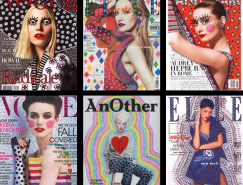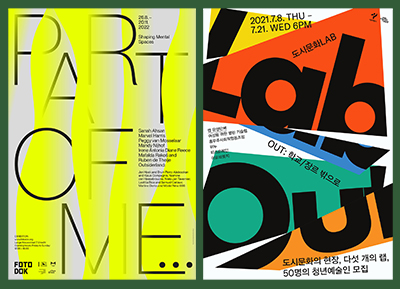(5)字符间距
图片文字说明:
文字间距基础
上:太紧
下:a和e的内部空间应该是相等的
平衡字符的内空间和外空间
Spacing. Some words about spacing type. Much more important than the shapes of the characters, is the rhythm of the type. A typeface with beautiful characters which are badly spaced is extremely hard to read. However, if the shapes of the letters are not that good, but when they are all perfectly spaced, the type will be fairly easy to read. Defining the rhythm is more important than defining the shapes.
字符间距
这里要说一下字符间距。字符的间距要比它的外形重要得多,这关系到字体的节奏。一种间距很糟糕的字体,不管外形如何优美,一样难于阅读。相反的,一款外形稍欠的字体,如果有完美的间距调节,这种字体一样可以易于阅读。因此,定义字体的节奏,要比定义字体的外形更加重要。
The white spaces inside and in between letters are defining the rhythm, much more than the black shapes of the letters. When you manage to create a good rhythm in your line of text, your type gets more readable and gives a balanced end result. While creating the black shapes, you have to take the white spaces into consideration. Because the white spaces are more important than the black shapes. However, white cannot exist without black. Changing a white shape, inevitable will have an influence on the black shape. From that perspective, one colour cannot be more important than the other.
字体的节奏取决于字符内部和字符之间的白空间,而非字符的黑色形体。如果你能够为你的文本建立一种很好的节奏,你的字体就更易于阅读,并获得均衡的整体效果。从开始创建黑色形体的时候起,你就应该同时把白空间的设置考虑在内。当然,白空间和黑空间是相互依存的。白空间的改变也必然的会影响黑空间的形态。从这个角度来看,我们不能说黑与白哪个更重要。
For example, there has to be a relation between the space inside an 'n' and the space between the 'i' and the 'n' (see drawing). In the top row you can see the space inside the 'n' is much much bigger than the space in between the 'n' and the 'i'. In the bottom row they are much more equal, and in this way you'll get a much better rhythm and more harmony in your line of text.
例如,字母n内部的白空间,以及i与n之间的白空间,两者之间必然会存在着某种关联(见图示)。在上面一行中,字母n内部的白空间要远大于i与n之间的白空间。在下面一行中,两者则要均衡得多,你也因而获得了更好的节奏,整个文本也更和谐。
The same goes for the inner form of the 'a' and the 'e' for example. There is a big relation between these two forms. If they have (optically) the same amount of white inside the character (=counter), your type will have a better rhythm as well.
同样的,小写a和e之间的内部空间也存在着这种关联。两个形状之间的关系非常紧密。这两个字符的内部白空间(counter,中文术语翻译为字怀/字谷/字币)在视觉上应当是等量大小的,这样你的字体才会有更好的节奏。
(6)黑与白
图片上的文字:
注意字符内部和外部的白空间
Black vs. white. Designing type is nothing more and nothing less than harmonizing black and white shapes. Black can't exist without white, and white can't exist without black. Black, the shape of a letter. White, the space in or in between letters. The amount of white inside a character defines the amount of white in between two characters.
黑与白
字体的设计,莫过于调整黑白空间的和谐。黑不能离开白而独立存在,白也是一样。黑,是字符的形体。白,是字符内部和字符之间的白色空间。两个字符之间白空间的大小,取决于字符内部白空间的大小。
As it is impossible to create a very black character with a big (white) counter form, a black typeface will always have smaller counters than a light typeface. Hence it follows that there is less space in between the characters (see drawing). A light typeface has much bigger counters. The space in between two letters has to be in proportion. As a consequence there is more white space in between light letters than in between black letters.
你永远不可能设计出一种笔画极其粗重而同时字怀(counter,字符内部包围的白空间)又很大的的粗黑体。一个粗黑体,其字怀永远要小于一个细线体,因而粗黑体的字符间距也一定要小于细线体(如图)。细线体的字怀很大,其字符间距也必须相应的大,所以细线体的字符之间就需要比粗黑体更大的白空间。
(7)意大利体与草写体
Italic vs. cursive. A roman font can be slanted (having an angle) and a cursive font can be upright (totally vertical like a roman). Urgh!
一个罗马体(roman,通常也被译作”正体“)可以是倾斜的(有一定的倾角),而一个草写体可以是竖直的(就好像是一个正体一样)。呃?!
The angle doesn't decide if a character is a 'roman' character or an 'cursive' character. This depends on the construction. To make it a bit more clear, take a look at the four big n's. As you would expect, the first letter is a roman character. But the second one as well. Although it's not totally vertical, it still has the same construction as the first 'n'. This is called a slanted roman. The third 'n' looks like an cursive, but also this one is not a real cursive. Basicly there is no difference between the second and third 'n', only some parts of the serifs have been cut off.
倾角并不能决定一个字母是一个“罗马体”还是一个“草写体”。关键在于其结构。要理解这一点,看看下面四个大n。你想的没错,第一个是一个罗马体。但第二个同样也是,虽然它并不是完全的竖直,它和第一个n拥有同样的结构。这种情形我们叫做倾斜的罗马体。第三个n看起来很象草写体了。但它实际上还不是一个真正的草写体。总的来说第三个n和第二个并没有多大区别,只是衬线的个别部分被切掉了而已。
Compare the first three letters with the last 'n'. That's a real cursive. The big difference with the previous three is the construction. The first three are constructed from separate pen strokes. The last 'n' is constructed out of one pen stroke. This is the basic difference between roman and cursive fonts. Not the angle, but the construction.
与前面三个n相比,最后一个n才是真正的草写体。它们之间最大的区别在于结构。前三个n的各个笔画之间都是独立的。最后一个n完全是一笔写成的。这就是罗马体和草写体之间最根本的区别:不在于倾角,而在于结构。
Many different explanations can be given for the difference between a 'cursive' and 'italic' from a historical point of view. However we consider this as the big difference: 'italic' is concerning the function, 'cursive' is concerning the construction. Almost anything can work as an 'italic', it doesn't even necessarily needs an angle. When making a font family with a roman and an italic font, the italic font can be constructed in many different ways. The third 'n' in the example could probably function perfectly as an italic inside your family. But don't forget, it's not always a real cursive when it's called 'italic'.
如果要从历史的视角来探讨草写体和“意大利体”之间的区别,那就说来话长了。但我们可以从这个角度来考虑:“意大利体”关乎功能,而“草写体”关乎结构。几乎任何字体都可以当成一个“意大利体”来使用,甚至根本不需要有什么倾角。当你制作一个包含“罗马体”和“意大利体”的字体家族时,这个“意大利体”可以用各种不同的方式来构建。图例中的第三个n也许就是你字体家族中一个完美的“意大利体”。但不要忘了,一个叫做“意大利体”的字体不一定是一个草写体。
译注:这篇翻的比较别扭。roman一般译作“正体”,italic译作“斜体”,严格来讲都不是准确的翻译,但却已经是约定俗成的翻译了。正确的翻译应该是“罗马体”和“意大利体”。在Windows上,对99%的用户来说,italic就是斜体的意思,word里面甚至为所有字体都提供了一个“斜体”的功能。但实际上“意大利体”指的是一类字体的统称,并且也并非所有的“意大利体”都是倾斜的。西方拉丁文字系统最早在古罗马帝国形成完整的体系,代表作品就是古罗马的石刻文字,非常庄严而典雅。而后来意大利人从手写体中发展出了意大利体。随着印刷术的发展,意大利体一般用来作为正文字体的一种特殊强调样式,用于注释、引文之类的场合,与正文字体相区别。因此许多比较完备的字体家族都提供了一个叫做“意大利体”的变体,和其正体(罗马体)相比,有些字体中的“意大利体”的字形完全是经过重新设计的,而不仅仅是倾斜那么简单。)
要了解更多有关意大利体的信息,可以参看下面这篇文章。
http://www.logosky.net/webpage/artreview/italic_font_20060916.htm
(8)风格的统一
图上文字:
衬线还是无衬线?看上图,你自己决定。
One for all What defines if one character can fit to another character? Once you made a decision, how to apply this to all the other characters in a font?
是什么决定一个字符能否匹配另一个字符?当你确定了一种风格,如何将之推广应用于字库中的全部字符?
Starting point: 'e' (in the center of the drawing). Imagine you sketched this 'e', you like it a lot, and now you want to design more characters fitting to this 'e'. Where to start? Should it be a serif or a sans serif for example?
先从这里开始:图中有一个“e”。想象你刚画好这个“e”的草图,你很喜欢它,然后你想要设计更多的其他字符来匹配这个“e”。该如何开始呢?比如说,它应该是一个衬线字体还是一个无衬线字体呢?
First try: 'i' on the left. Sans serif. The black part is as thick as the black parts of the 'e'. Same x-height. So this should work you think.
第一个尝试:左边的“i”,无衬线体。它最粗的部分和“e”最粗部分的笔画宽度相同,同样的x-高度。它应该能表达你的想法了。
Second try: 'i' on the right. Same thickness, the character has the same x-height, but now it has serifs.
第二个尝试:右边的“i”。同样的宽度,同样的x-高度,但这次它有了衬线。
The bowl of the 'e' is not only having a certain thickness, but the 'e' also has contrast. The 'i' on the left has no contrast at all. Therefore these two characters don't belong to each other. The 'i' on the right however has the same kind of contrast as the 'e', just because it has serifs. Just those tiny serifs make sure there are thick and thin parts, like the 'e' has. This means that the starting point, the 'e', already defined that the rest of the font cannot be a sans serif typeface.
“e”的字碗不仅仅有着一定的宽度,同时还有着粗细的对比。左边的“i”完全没有笔画粗细的对比。因此这两个字符不是完美的一对。而右边的“i”有着和“e”同样的粗细对比,是因为它有了衬线。这细细的衬线让它象“e”那样拥有了粗细的区别。这就是起点。这个“e”,已经决定了这个字体中的其余字符不应该是一个无衬线字体。
Of course, every so called rule is there to be broken. Mentioning this, doesn't mean you can't make a font which has an 'e' combined with an 'i' like the one on the left. Everything is possible of course. But now you realize better what you are doing, also when you don't do it. Still get it?
当然了,每一条所谓的规则到最后都会有例外。从这个意义来说,你完全可以把中间的“e”和左边的“i”配一对做一个字体。没有什么是不可能的。但现在你已经能够更深刻的意识到你为什么这样做,抑或是你为什么不那样做。还能理解吗?













